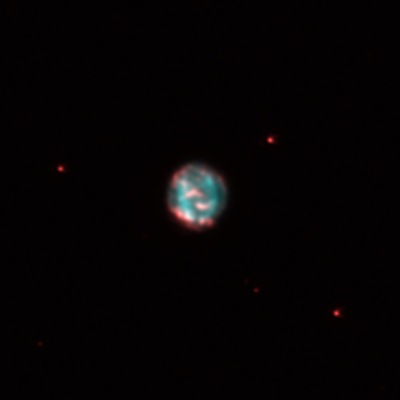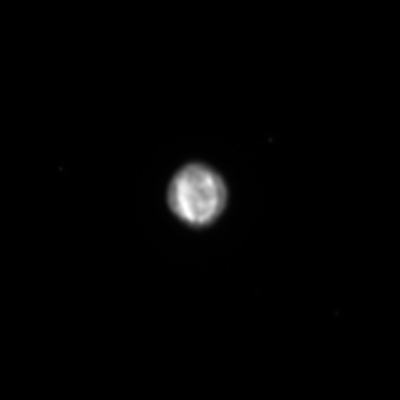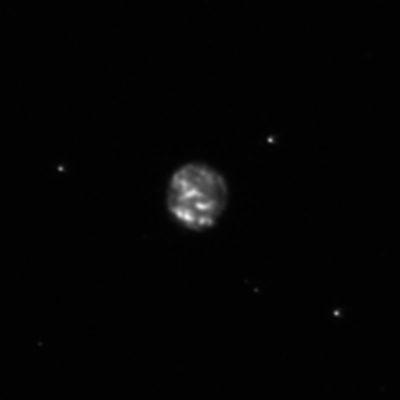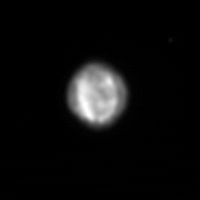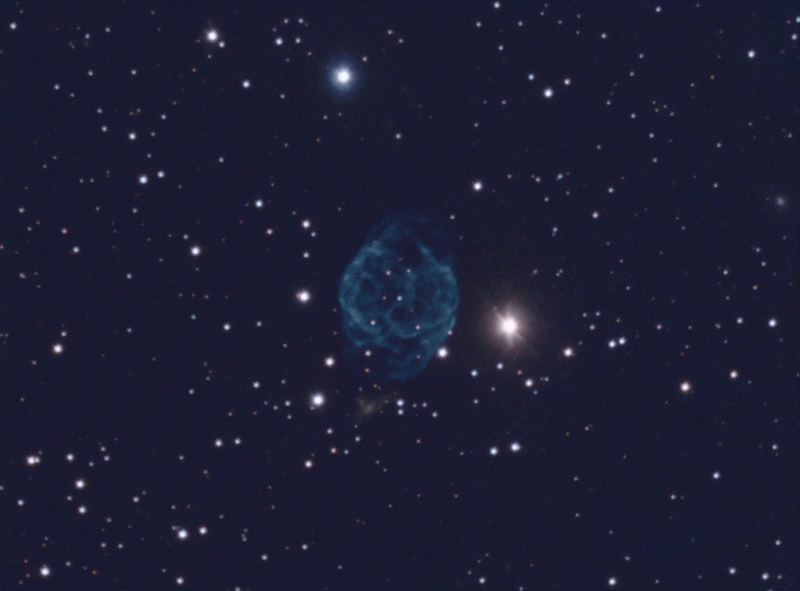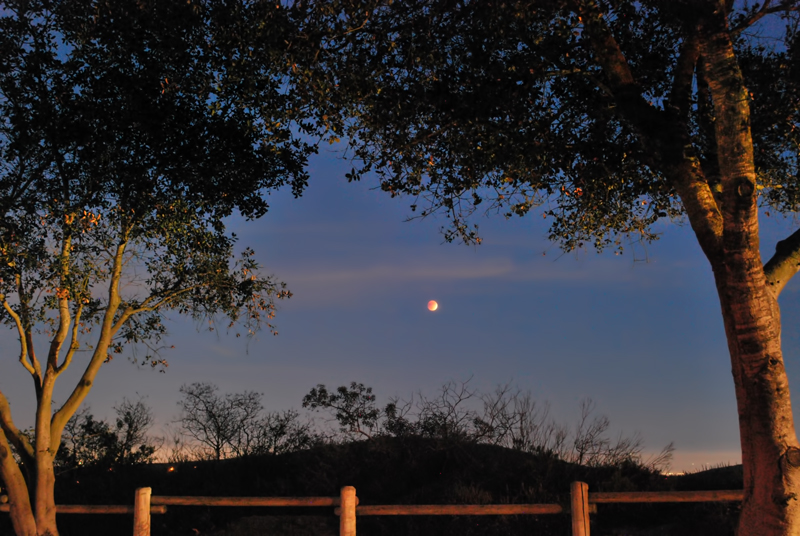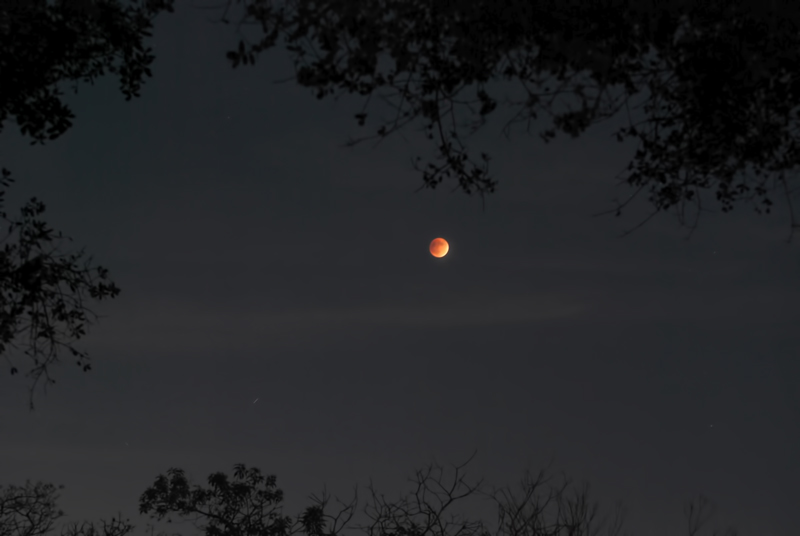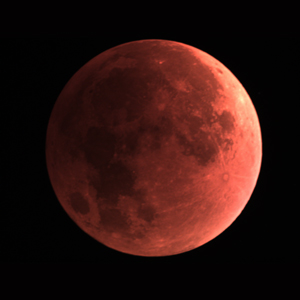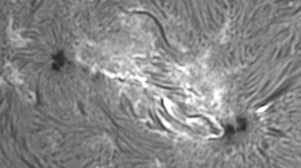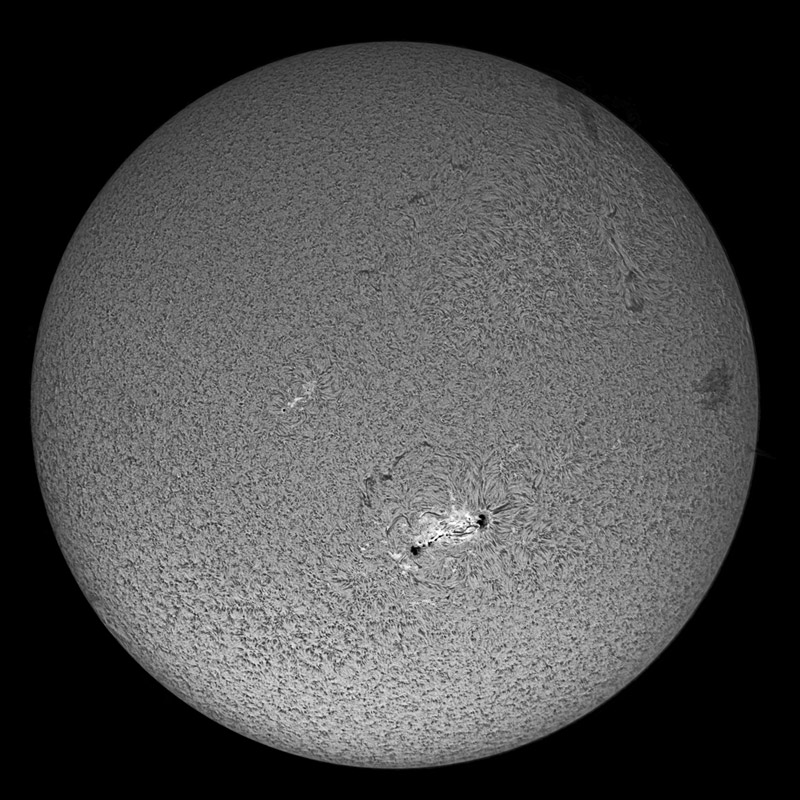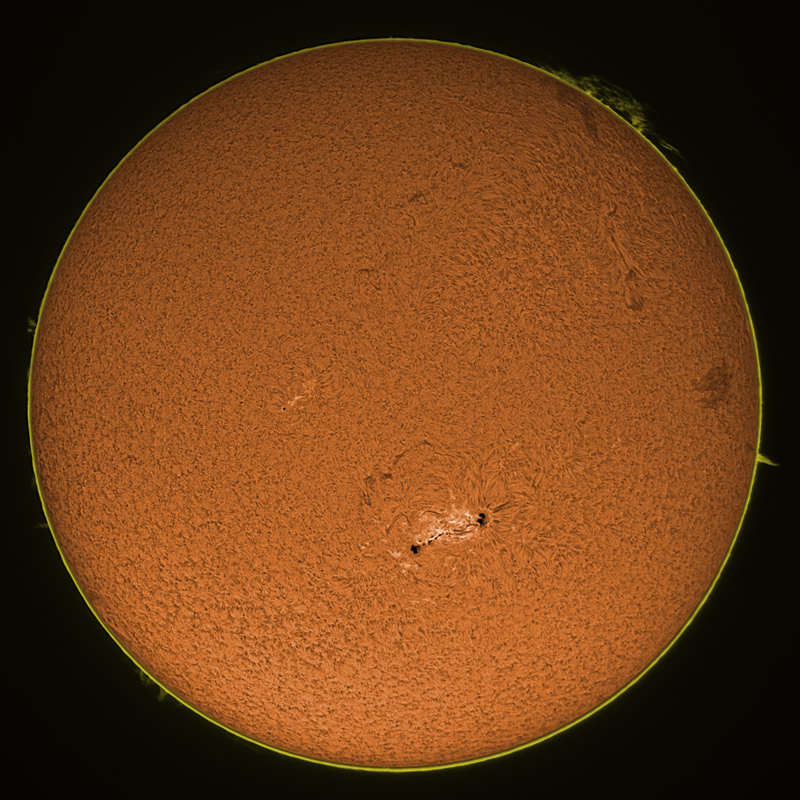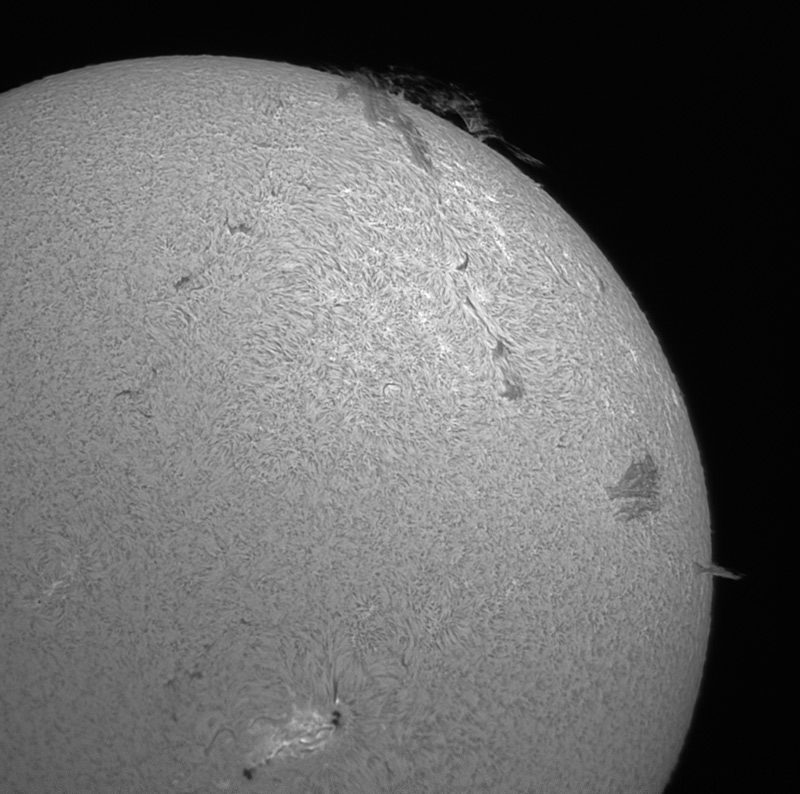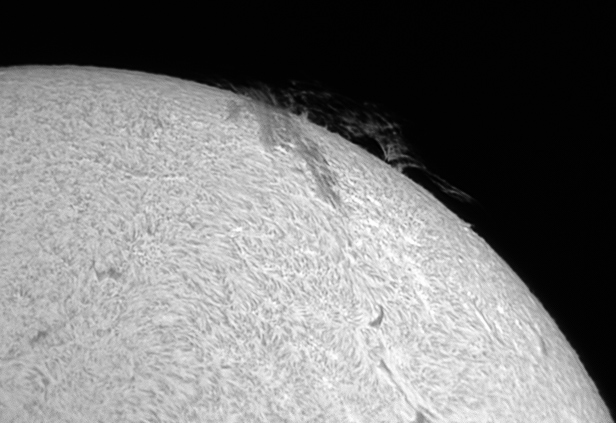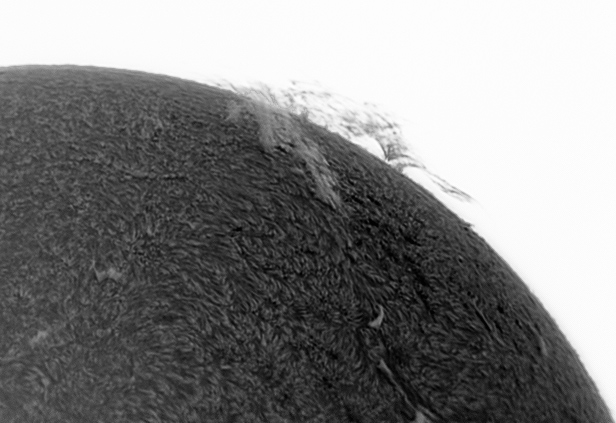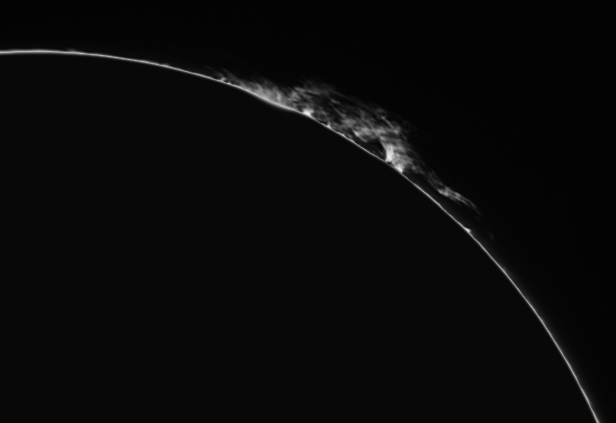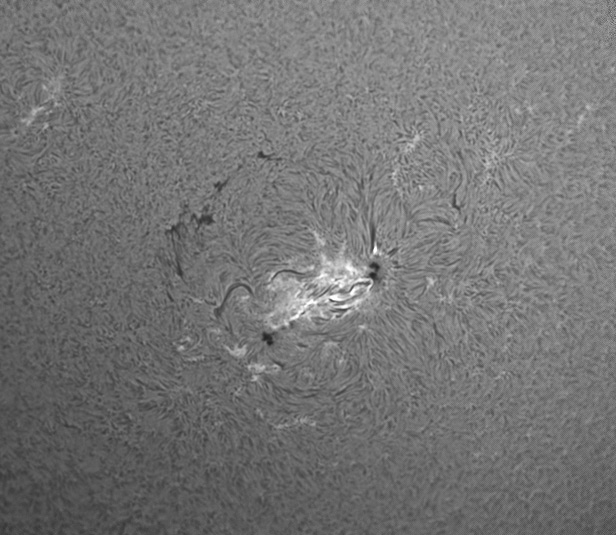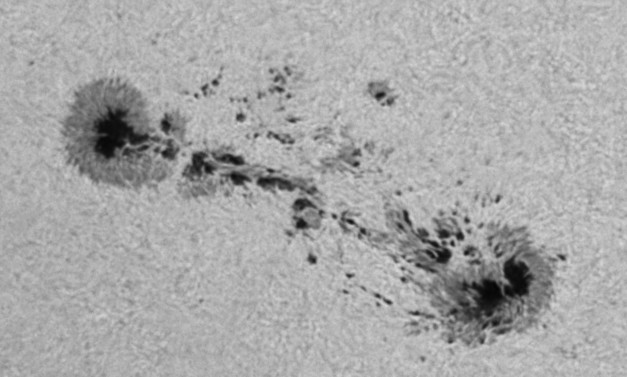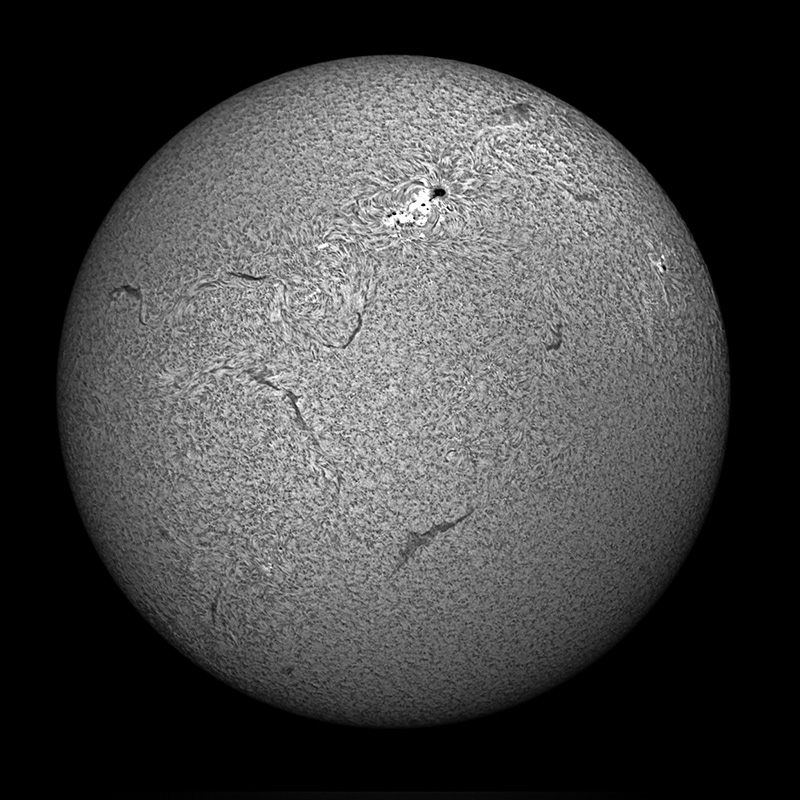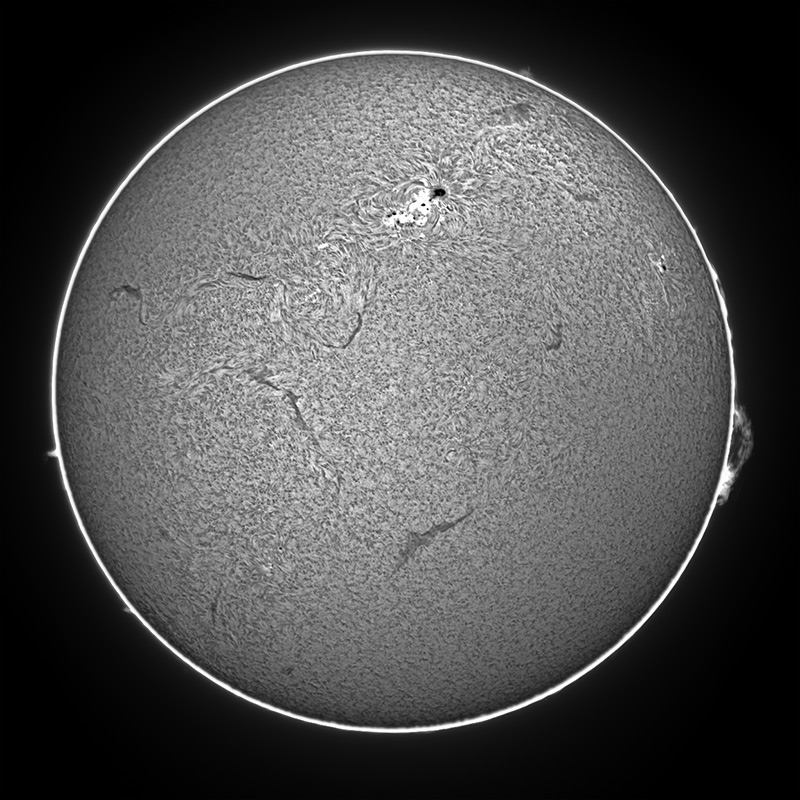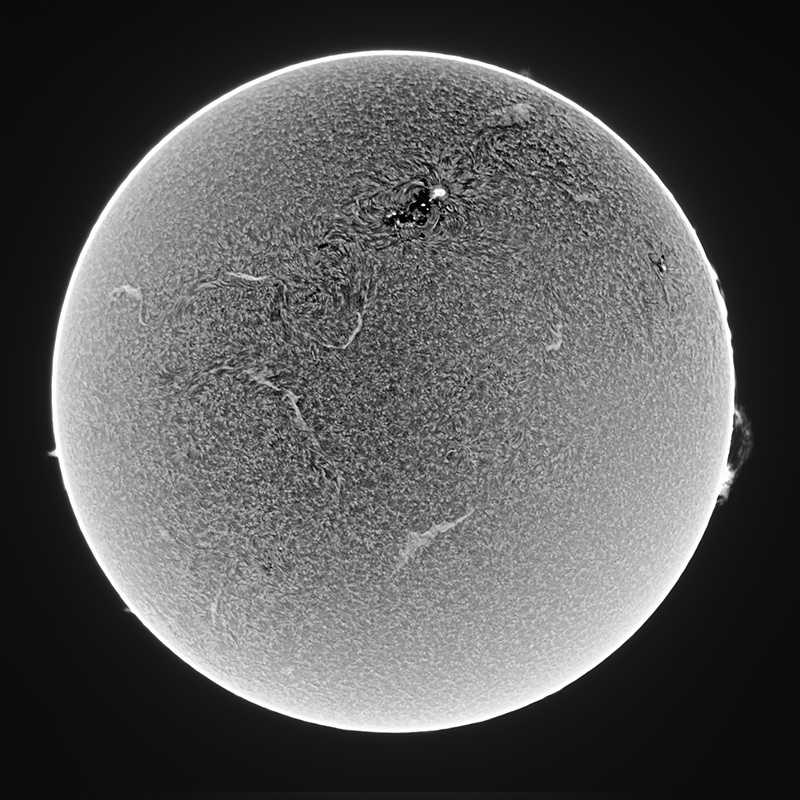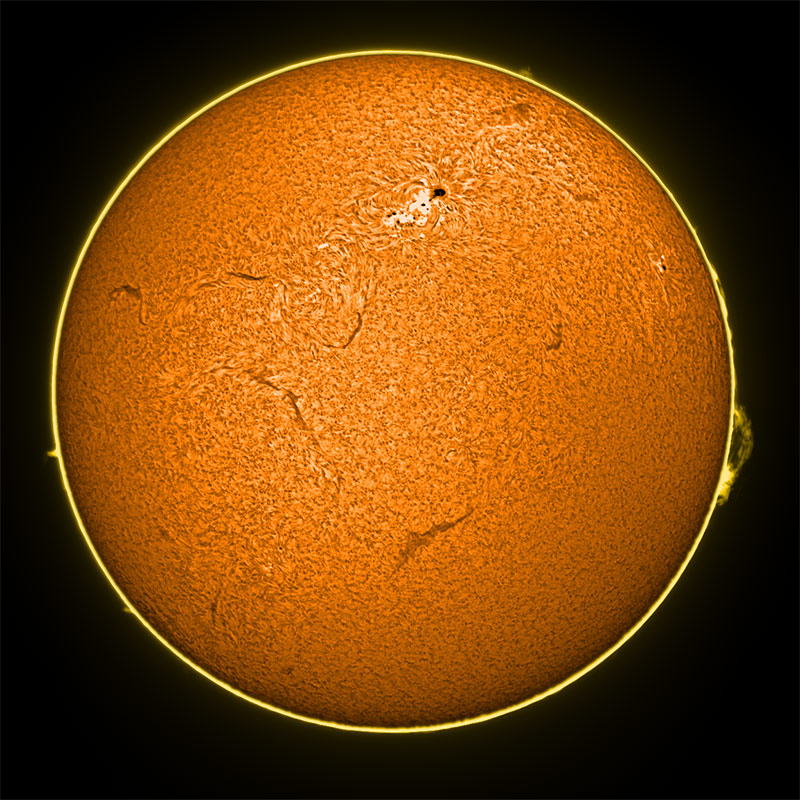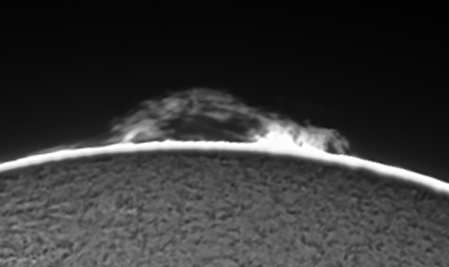Planetary nebulae are clouds of glowing gas surrounding a “dying”
star. Visually, many are relatively
bright grey patches (by deep sky object standard, though very faint compared to
an actual planet). Spectrographically,
they typically have very strong doubly ionized oxygen (OIII) emissions compared
to other nebulae. An OIII filter is a
handy tool for the amateur astronomer, enhancing these nebulae and confirming
their identity. Though not detectable visually,
they also tend to be relatively strong in singly ionized Nitrogen (NII) and singly
ionized Helium (denoted HeII, which I may avoid going forward due
to the unfortunate confusion).
NGC 6818 aka the little gem is a small bright planetary
nebula in sagittarius. Roughly planet
sized and near the ecliptic (path of the planets through the sky) one can see
why it gets the moniker “planetary”, but at roughly 6,000 light years away it’s
1/2 light year across. The blue/teal in
this image is due to OIII emissions and red due to NII emissions.
Here’s the OIII
NII
Blink
8" LX200R, SX Trius 694 0.4"/px
astrodon 3nm NII, 3nm OIII
ASA DDM60
NII 19x20 min OIII 24x5 min
7/26-8/21/2015
